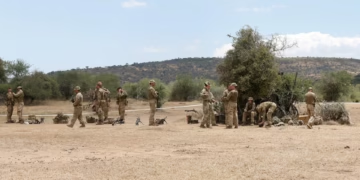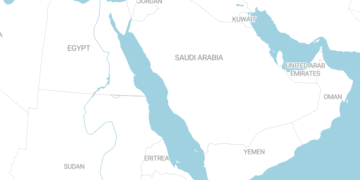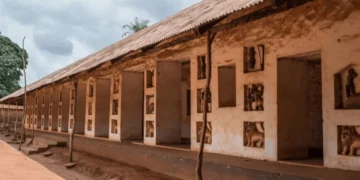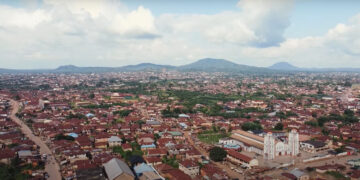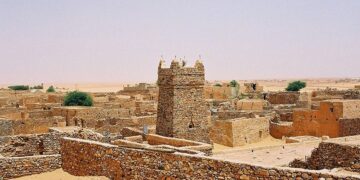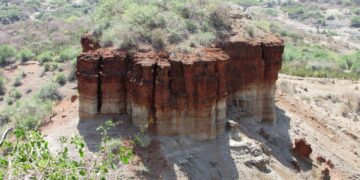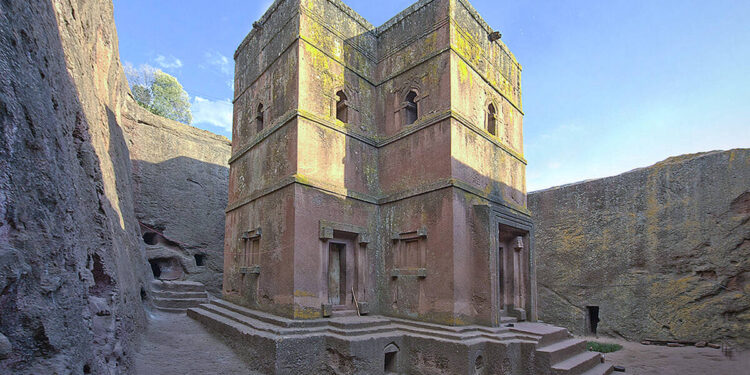Lalibela, located in the Amhara region of northern Ethiopia, at an altitude of approximately 2,500 meters above sea level, comprises a complex of eleven monolithic churches, designated a UNESCO World Heritage Site in 1978. These churches are built using traditional methods using separate building materials and are carved entirely from a single mass of red volcanic rock that forms the region’s geology. This site is a center of pilgrimage and worship for the Ethiopian Orthodox Church and provides a material record of medieval Ethiopian architecture, theology, and history.
The construction of these churches is traditionally attributed to King Gebre Meskel Lalibela, who ruled Ethiopia in the late 12th and early 13th centuries AD, during the reign of the Zagwe dynasty. This architectural project followed major political and religious transformations in the region. After Saladin’s conquest of Jerusalem in 1187, the traditional pilgrimage to the Holy Land for Ethiopian Christians became increasingly perilous and difficult. Historical accounts indicate that King Lalibela sought to create a “New Jerusalem” in Ethiopia as an alternative pilgrimage site for believers.
The site plan was designed to reflect the topography of Jerusalem; the local Jordan River was named “Jordanus,” and other sites were referred to by biblical names. The goal was to create an integrated religious space that reproduced the geography of the Holy Land, allowing believers to experience a similar spiritual experience without leaving their homeland. This vision formed part of the Zagwe dynasty’s strategy to establish its religious and political legitimacy and directly link its rule to global Christian history.
The construction of the churches of Lalibela is considered an engineering feat, given the tools available at the time. The process began with the demarcation of the church’s perimeter on the flat rock face. Workers then dug deep trenches around this perimeter to isolate the main rock mass from its surroundings. After the entire mass was isolated, the actual carving began from the top down, forming the roof first, followed by the columns, windows, and arches, all the way to the floor and interior walls. The resulting debris was removed through the openings, which later formed the doors and windows.
This “top-down” method avoided the need for scaffolding or external support structures, but it required meticulous planning that allowed for no margin for error, as any carving error could not be corrected.
Churches are divided into two main categories based on the method of carving. Monolithic churches are the most complex, carved entirely from a single rock mass and completely separated from the parent rock on all sides, such as the Church of St. George (Bete Giyorgis). These churches stand as independent architectural blocks within a courtyard carved into the rock. The second category is the semi-monolithic churches. These are churches with some facades carved from the rock, while other parts, such as the roof or some walls, remain attached to the underlying rock.
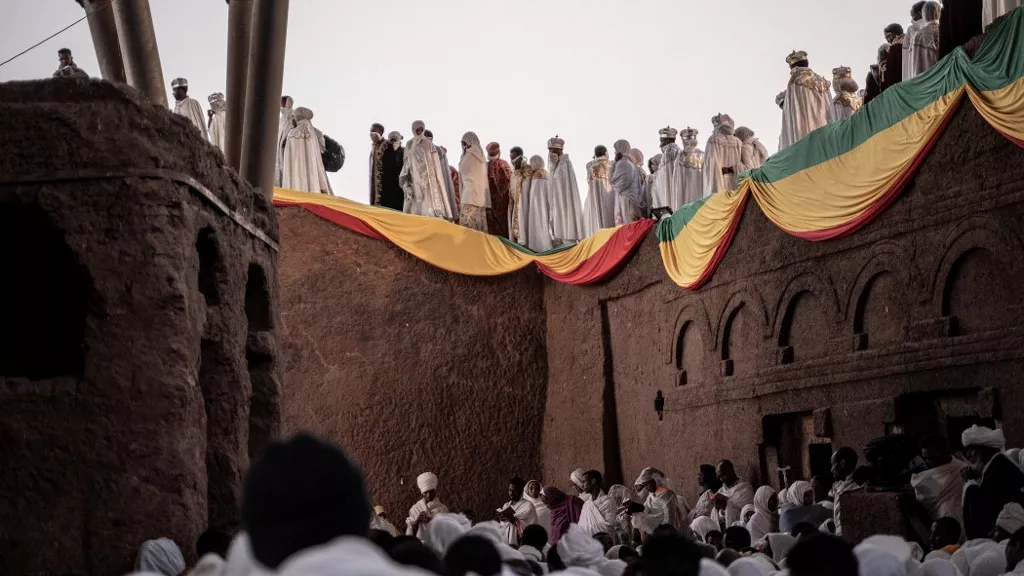
The interior designs of the churches display great diversity, with columns, arches, domes, and cornices all carved from the same rock. Some also display diverse architectural influences, including styles dating back to the ancient Aksumite period, as well as elements that may be inspired by Byzantine or Coptic architecture.
The complex is divided into three main groups of churches, separated by the artificial Jordan River. The first is the Northwestern Group, consisting of six churches; it is the largest. This group includes Bete Medhane Alem (Church of the Savior of the World), the largest monolithic church in the world, measuring 33.5 meters long, 23.5 meters wide, and 11 meters high. This church features two rows of internal and external columns, and its design resembles a classical Greek basilica. Other churches include Bete Maryam (Church of the Virgin Mary), Bete Meskel (Church of the Cross), Bete Denyagul (Church of the Virgins), and Bete Galgotha Mikael (Church of Calvary and Michael), which is said to contain the tomb of King Lalibela.
The Southeastern Group consists of four churches connected by a network of tunnels and rock-cut passages. This group includes Bete Emmanuel, whose exterior facades are finely carved to mimic the layers of wood and stone construction, a traditional Aksumite architectural style. It also includes Bet Mercurius, Bete Abba Libanos, and Bete Gabriel-Rafael (Church of Gabriel and Raphael), which was used as a royal fortress before being converted into a church.
Bete Giyorgis Church (Church of St. George): This church stands apart from the other two groups and is considered the most famous and best preserved. Carved in the shape of an equilateral Greek cross, it is surrounded by a deep courtyard. It is accessible via a rock tunnel. Its symmetrical design and finely carved facades demonstrate the advanced level of engineering skill achieved.
All the churches on the site are connected by a complex network of underground ditches, tunnels, and passages, allowing access between them without having to emerge to the surface. This design creates a sense of transition between different worlds and enhances the spiritual experience of pilgrims.
Lalibela is not just an archaeological site; it is a living and vibrant religious center. Rituals and prayers continue in the same way as they have for centuries. During major religious celebrations, such as Christmas (Genna) and Epiphany (Timket), tens of thousands of pilgrims from across Ethiopia flock to the site, dressed in their traditional white robes, to participate in all-night prayers. Priests carry ornate liturgical canopies and silver crosses, and the sounds of chants in the ancient Ge’ez language echo throughout the rock complex.
The churches house a collection of ancient manuscripts and religious books, ancient crosses, and icons dating back to various historical periods, making them repositories of the religious and artistic heritage of the Ethiopian Orthodox Tewahedo Church. Priests and deacons residing in Lalibela serve these churches and maintain their traditions.







